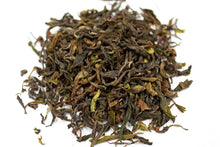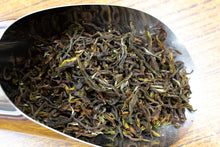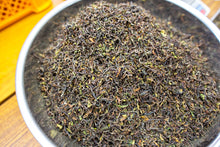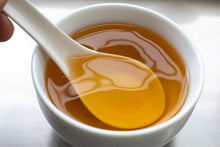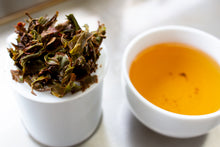
Tea is made from the clonal bush. The tea garden is located at 1500m.
Ruby particularly consists of a lot of young tea buds. So, it has a soft and creamy drinking sensation.
The interesting thing about Ruby is this tea is fermented relatively well despite the 1st Flush.
With a longer period of fermentation, Ruby is a little more well-fermented 1st Flush that gives a sweet fruity flavor and refreshing floral scent, with bold drinking sensation and deep aftertaste.


The reason why the Darjeeling 1st Flush is greenish
In Darjeeling tea, the 1st flush refers to the first-plucked spring tea.
Usually, the Darjeeling 1st Flush tea is greenish. From the outlook, it looks like a green tea. Many people misunderstand that it is green because of the nature of spring tea. In fact, it is green because the manufacturer purposely made it so. The Darjeeling 1st Flush tea is fermented (oxidized) nearly zero hour after rolling process so as to keep it in green colour and to give a refreshing floral note. If tea is fermented longer, it will turn into copper-red like autumn black tea colour.
The reason why some Darjeeling 1st Flush is available in February
In February, we heard the news that the Darjeeling 1st Flush is available in the tea market. In March, most Darjeeling teas seems ready in the market.
The tea production zone of Darjeeling is similar latitude as that of Fujian in China or Taiwan. Yunnan Province is situated more south than Darjeeling. So, we can assume that tea grows at similar speed in these areas as long as the altitude is the same.
In Yunnan, the tea gardens at altitude around 1600m are only ready for plucking at the end of March. As for the garden that altitude is at around 2000m, tea is ready for plucking in the middle of April. So, it sounds very strange if the high-altitude Darjeeling tea is ready in February or early March.Why Darjeeling tea grows faster despite the latitude is more North than Taiwan or Yunnan?
In fact, those early-plucked Darjeeling teas in February or beginning of March is not from the high-altitude tea garden. In Darjeeling, tea gardens are not only at the higher altitude. Many famous tea gardens consist of a wide section where the altitude is ranging from low altitude like a few hundred meters to high altitude of 2000m or more. For example, Singbulli estate is 360m - 1230m, and Risheehat estate is 760m -1230m. So, the earlier-produced tea is actually from the lower altitude, yet those early lots of tea are sold at premium price because it is available in early season. The new tea in spring always command a high price because it is often sought after by tea drinkers.
Even in Darjeeling, it is just like other places, the spring comes later at higher elevation.
HOJO selected high-altitude Darjeeling Tea
In fact, the high-altitude tea is harvested very late in the season, it is normally ready only in April. We are very interested in the high-altitude tea because it has a more well-rounded taste and flavor, soft drinking sensation and more long-lasting aftertaste. So, we have waited until April and succeeded to procure the 1st Flush tea from high altitude of Darjeeling.
In tea garden located at high altitude, tea grows slower. It is because there is a big gap in temperature between day and night. The high mountain tea gives a thick taste with a long-lasting finishing, and no bitterness or astringent taste.







